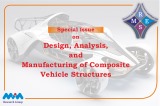Research Article
Flexural behavior of printed concrete wide beams with dispersed fibers reinforced
Loan Thi Pham1, Thanh Duy Trinh1, Quang Trong Do1, Jie Yi Huang2
1Department of Civil Engineering, Haiphong University, Hai Phong, Vietnam
2College of Civil Eng. and Architecture, Shandong University of Sciences and Technology, Qingdao, China
Keywords
Abstract
Printed wide beams;
Glass fiber;
Steel fiber;
Failure patterns;
Flexural strength;
Ductility
Thanks to the highlighted advantages of the construction method, including digitalization and automation, sustainable materials, and environmental protection, 3D concrete printing technology has been a hot topic for a few decades. This construction method was initially used in small and non-structural applications and is now being adopted for large-scale structures. This transition requires a lot of research on the structural behavior of structures. Therefore, the study focuses on the behavior of wide beams, which is the primary element in the structure system. Nine wide beams with different glass/steel fiber amounts were printed, and 3-point loading tests were conducted. The failure mode, flexural strength, deflection, and ductility were reported in this study. In this study, the girder web was designed in the style of truss beams, and glass/steel fibers were used. The fibers, including glass and steel fiber, will enhance the beams' flexural strength and ductility. The results showed that (1) The adhesion force between the printed layers ensures the overall working of the wide beams; (2) The failure patterns of glass fiber beams were brittle; glass fibers show insignificant improvement in compressive strength; the flexural capacity was significantly enhanced, and the optimal steel fiber amount is 1.0%. (3) The failure patterns of steel fiber beams were ductile; steel fibers showed light improvement in compressive strength. The steel fiber significantly impacted the flexural strength. The optimum amount of steel fibers was determined to be ranged from 1.0% to 1.5%.
© 2023 MIM Research Group. All rights reserved.


